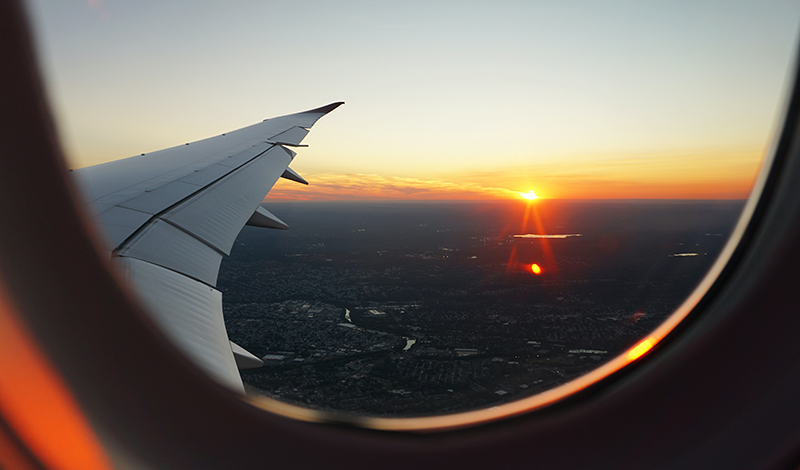From his first journey to the United States in October 1960 to his last in June 1996, Ikeda Sensei spent 386 days—more than a year of his life—building the foundation of lasting peace in our multiracial nation, which he described as representing humanity’s future.
In the following pages, the World Tribune chronicles Sensei’s 27 visits to the U.S.—his enduring actions distilled in these lines from a poem he wrote in May 2001, at the start of the second series of Seven Bells: “The world is too small / For the colossus / Of the people arisen. / The ultimate power of destiny / That will determine the future / Of this Century of Humanity / Lies in the people” (Sept. 21, 2012, World Tribune, p. 6).
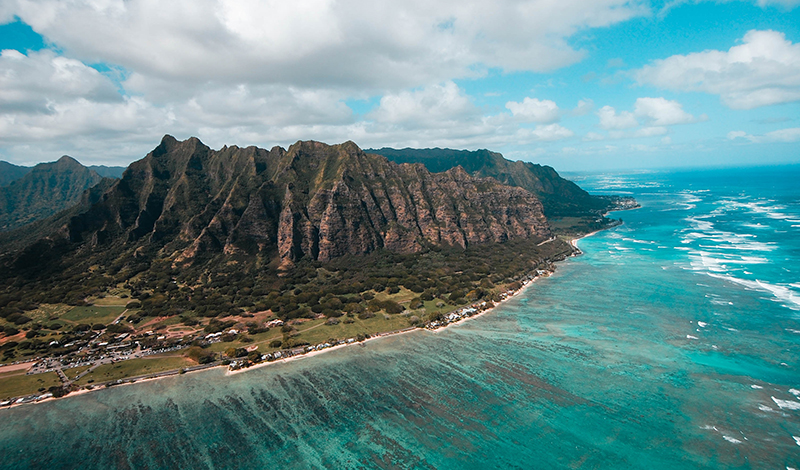
1960s
Visit 1: October 1960
Honolulu, San Francisco, Seattle, Chicago, New York, Washington, D.C., Los Angeles
In the U.S., Ikeda Sensei visited seven cities, meeting with the first Soka Gakkai members here, many of whom were Japanese women married to American servicemen and struggling with isolation in a foreign land.
In each city, the first district discussion meetings were held. Although these gatherings were small by Soka Gakkai standards, Sensei established the first districts and also Los Angeles Chapter. Thus, he created the framework for members to carry out their Buddhist practice, centered on the discussion meeting, while they sought to spread Buddhism in a vast new land.
Visit 2: January 1963
Honolulu, Los Angeles, New York
In Honolulu, Sensei attended the Hawaii Conference, during which he announced new leadership appointments for America General Chapter. He also created Hawaii Chapter, with the number of districts there expanding from two to eight. Speaking to the members, he said: “Please respect and trust one another as comrades, compensate for one another’s shortcomings and support one another. Through so doing, you will create iron unity. This unity will be your greatest strength” (The New Human Revolution, vol. 7, revised edition, p. 112).
In Los Angeles, he immediately began reorganizing Los Angeles Chapter to keep pace with the growing membership. Two days after his arrival, he attended the America West General Meeting, where new districts and leaders were appointed. Also announced were plans for the establishment of the first Soka Gakkai community center in America, located in East Los Angeles. He named it the Los Angeles Community Center.
Upon his arrival in New York, Sensei created New York Chapter—the sixth U.S. chapter after Los Angeles, San Francisco, Chicago, Washington, D.C., and Hawaii. He then attended the America East General Meeting held in conjunction with the New York Chapter Inaugural Meeting. While there, he discussed the formation of a religious corporation in the U.S.
At the chapter meeting, he said to the members: “Spreading Buddhism in America—and particularly here in New York—is extremely important toward creating a model for freedom directly related to human happiness” (NHR-7, revised edition, 160).
Visit 3: August 1965
Los Angeles, San Francisco, Seattle, Honolulu
Amid the backdrop of the escalating civil unrest in Watts, California, Sensei arrived in Los Angeles and attended the first Soka Gakkai outdoor culture festival in the U.S.
The day before he left for the U.S., a Soka Gakkai leader had urged Sensei to postpone his trip due to the increasing tensions in Los Angeles. He refused, emphasizing that it was precisely the time to make greater efforts to spread the Buddhist philosophy of respect for the dignity of life in America.
Sensei also went to the Los Angeles Community Center, where he did a solemn gongyo together with the members there, praying in earnest for the peace of American society and the safety of its people.
He then traveled to Mexico, San Francisco, Seattle and Honolulu, where he gave his all to fostering core leaders and spent many hours offering personal guidance to the members before heading home on Aug. 25.
Visit 4: January 1966
Honolulu
Sensei arrived in Honolulu on Jan. 13 with a delegation of 120 leaders from Japan to open the way for international exchange and underscore to them the importance of knowing about the world. The following day, he attended the opening of the Hawaii Community Center—the Soka Gakkai’s fifth overseas community center—where he said: “The world today is filled with bleak news, as exemplified by the war in Vietnam. But from the perspective of the Buddhist principle of the simultaneity of cause and effect, I am certain that the opening of this center, a citadel of peace, will lead to fresh development in the movement to achieve world peace” (NHR-10, revised edition, 271–72). During his stay on the island, he wholeheartedly encouraged local members and newly appointed leaders, including those in a young men’s training group called the Pineapple Corps, whose motto was “Go For Broke!” Among their efforts, the corps planned and organized meetings, directed parking and taught new members gongyo.
Visit 5: March 1966
Los Angeles, New York, Miami, Honolulu
In March 1966, the founding month of the Soka Gakkai men’s division, Sensei set off to North and South America, visiting places including Los Angeles, New York, Brazil and Peru. As a testament to the profound hurdles members faced spreading Buddhism in their countries, Sensei’s visit to Brazil was conducted under the constant surveillance of the military police, acting out of prejudice and misconceptions about the burgeoning movement. (The members’ enduring efforts to win trust in their communities paved the way for Sensei’s eventual return in February 1984 at the invitation of the country’s president.) He later made a brief stop in Miami before returning to Los Angeles, where he participated in a leaders meeting at the Los Angeles Community Center. He then traveled to Honolulu before returning to Japan.
Visit 6: August 1966
Honolulu
Sensei continued to expand the foundation of worldwide kosen-rufu in 1966, visiting and encouraging members throughout North and South America. In July of that year, the English-language study journal Seikyo Times, the precursor to Living Buddhism, began publishing English translations of Nichiren Daishonin’s writings, beginning with the letter “Reply to Kyo’o.” This marked the first step in the ongoing translation and dissemination of Nichiren Buddhism throughout the world.
Visit 7: May 1967
Honolulu, Los Angeles, New York
On May 12, Sensei arrived in Honolulu. On his first visit seven years earlier, only 30 people were present at the discussion meeting he attended. Now, the membership had expanded to 2,000, making it a major base of activities for the Pacific region. The driving force of their growth—which took the accompanying leaders by surprise—was none other than Sensei’s thoroughgoing encouragement to each member.
The day after he arrived in Los Angeles, he participated in a ceremony in Etiwanda, California. During the gathering, he declared that the Soka Gakkai organization in America had embarked on a new era. He then announced the formation of three headquarters—West Coast, East Coast and Hawaii. The members were overjoyed by this development, sensing that the time had come for kosen-rufu in America to begin in earnest.
On May 17, Sensei arrived in New York, and the following day, he attended a meeting at the New York Community Center. He also visited the U.N. Headquarters and the Empire State Building. During his time there, he spoke with a young women’s division member about the key to raising youth, touching on the importance of trusting and respecting youth, listening to them and giving them opportunities that enable them to become more capable than their seniors. He said: “At the same time, … if we simply tell the youth to do this or that without guiding them, it’s as if we’re waiting for them to fail. First, we ourselves have to take action and set an example, and then we can give them the responsibility, encouraging them all the while” (NHR-12, revised edition, 31).
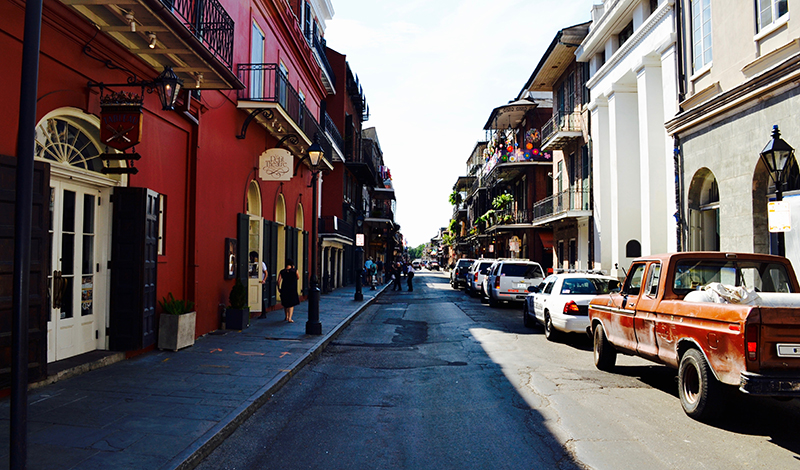
1970s
Visit 8: May 1972
Washington, D.C., Los Angeles, Honolulu
After visiting London, where he conducted a multiday dialogue with historian Arnold J. Toynbee, Ikeda Sensei flew to France to meet local members and visit the Louvre. He then left for the U.S., arriving on May 14 in Washington, D.C. There, he visited the Freer Art Gallery and attended the official opening of the Washington, D.C., Community Center. On May 17, he traveled to Los Angeles, where he visited the SGI-USA Headquarters in Santa Monica, California, and attended various events, including the opening of the former Malibu Training Center and the All-America General Meeting. He stopped in Honolulu before concluding his U.S. visit.
Visit 9: August 1973
Honolulu, Maui
Sensei touched down in Honolulu on Aug. 11 and attended opening ceremonies for the Hawaii Community Center No. 2. He then traveled to Maui, where he opened the Maui Community Center and established a chapter. After returning to Honolulu, he participated in a conference with some 60 representatives from 30 countries and territories in North, Central and South America to establish the Soka Gakkai Pan-American League, a precursor to the Soka Gakkai International.
Visit 10: March–April 1974
San Francisco, Los Angeles, New Orleans, Miami, Santa Ana, California, San Diego, Honolulu
Sensei flew into Los Angeles and then on to New Orleans, where he spoke with the University of New Orleans chancellor on March 15. The same evening, he attended a guidance session with the local members, naming them the Happiness Group. In Miami, he participated in a meeting with nearly 200 members before traveling to South America.
Upon returning to the U.S., Sensei presided over the opening of the Santa Ana Community Center on March 31, where the city’s mayor conferred upon him an honorary citizenship.
On April 1, he delivered his first official overseas academic lecture at the University of California, Los Angeles, titled “Toward the Twenty-first Century” before some 600 students, professors and others. As he walked to the podium, he recalled it was April 2 in Japan, the day his mentor Josei Toda had passed away 16 years before, and thought of the words his mentor shared with him in the summer of 1954: “I will build a solid foundation for kosen-rufu in Japan, but you will pave the way for kosen-rufu throughout the world. I will create the blueprint; you will make it a reality” (The New Human Revolution, vol. 19, pp. 172–73).
That afternoon, Sensei attended a training session for representative youth members, fielding their questions and discussing the meaning of gongyo and one’s basic attitude in faith. He then traveled to San Diego, where the mayor presented him with the key to the city and San Diego County awarded him an honorary citizenship. Sensei also attended the opening ceremony for the San Diego Community Center and the San Diego Convention.
He ended his U.S. visit with a stop in Honolulu, where he held a celebration with members from Hawaii and Guam.
Visit 11: January 1975
Los Angeles, New York, Washington, D.C., Chicago, Honolulu and Tamuning, Guam
In New York, Sensei visited Columbia University and the U.N. Headquarters, where he presented some 11 million signatures calling for the abolition of nuclear weapons and the eradication of war. He also held a press conference at the U.N. the same day.
Sensei then traveled to Washington, D.C., and visited the U.S. State Department, where he held a dialogue with then-Secretary of State Henry Kissinger. He also visited Arlington National Cemetery, where he laid a wreath at the Tomb of the Unknown Soldier. He also donated 10,000 books to the Library of Congress.
Sensei flew next to Chicago and donated 1,000 books to the University of Chicago. He also attended the opening of the Chicago Community Center. En route to Guam, he stopped in Los Angeles and Honolulu.
In Guam, Sensei joined 158 delegates from 51 countries and territories for the First World Peace Conference at the International Trade Center. At the event, the Soka Gakkai International was established, and Daisaku Ikeda was appointed its president. Addressing the participants, he said: “The sun of Nichiren Buddhism has begun to rise above the distant horizon. Rather than seeking after your own praise or glory, I hope that you will dedicate your noble lives to sowing the seeds of peace of the Mystic Law throughout the entire world. I shall do the same” (NHR-21, 33).
Visit 12: July 1975
Honolulu
Sensei traveled to Honolulu for the Blue Hawaii Convention, which lasted several days and included a series of cultural performances and a nationwide general meeting attended by 50,000 people on Waikiki Beach. During this visit, he also met with the governor, who spoke at the general meeting. Just before the convention, Sensei said to Mrs. Ikeda: “At this convention, I want to focus more on the support staff who are working hard behind the scenes than the individuals in the spotlight. I intend to encourage them with my entire being. That’s what good leaders should do, and that’s my spirit” (NHR-22, 98–99).
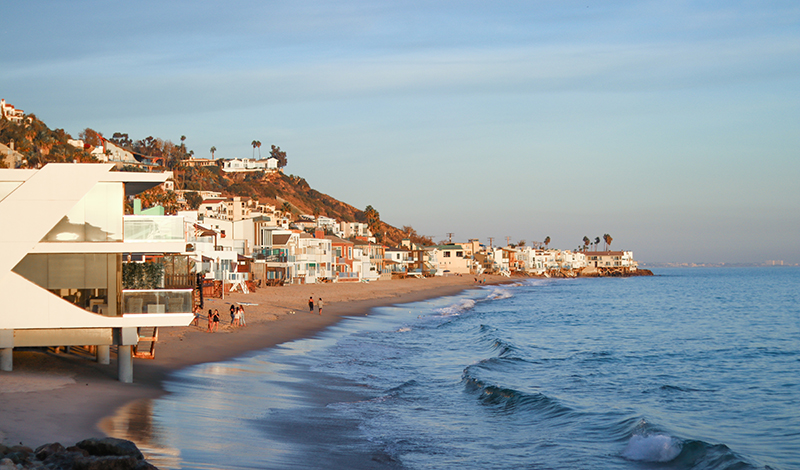
1980s
Visit 13: September–October 1980
Honolulu, San Francisco, Washington, D.C., Chicago, Los Angeles
To commemorate the 20th anniversary of his first visit to the U.S., Canada and Brazil to spread the life-affirming principles of Nichiren Buddhism throughout the world, Ikeda Sensei attended SGI-USA general meetings in Honolulu, San Francisco, Washington, D.C., and Chicago. In Los Angeles, he participated in the First SGI General Meeting.
On Oct. 12, Sensei attended the “Capture the Spirit” culture festival in Chicago, where some 500 members took to the stage, singing, dancing and sharing powerful faith experiences before an audience of 5,000. Moved by the performances, Sensei
composed poems for the participants.
Visit 14: January 1981
Honolulu, Los Angeles
On Jan. 13, 1981, Sensei and Mrs. Ikeda arrived in Honolulu to begin a lengthy tour of the U.S., the Caribbean, Panama and Mexico.
Sensei spent a week in Honolulu and participated in the International Study Conference at the SGI-USA Hawaii Community Center. On Jan. 15, he offered his respects and prayers for the 1,177 Americans who lie entombed in the wreckage of the USS Arizona as a result of Japan’s attack on Pearl Harbor. Two days later, Sensei joined some 12,000 people for a Japan-U.S. friendship exchange festival at the Waikiki Shell.
He then traveled to Los Angeles for a similar Japan-U.S. goodwill culture festival on Jan. 24 at the Shrine Auditorium.
Visit 15: February–March 1981
Miami, Los Angeles, Honolulu
On Feb. 19, Sensei received an honorary citizenship from the city of North Miami. On March 8 in Malibu, California, he gave a lecture on bridging Buddhism and Christianity. The next day, he traveled to Honolulu, where he gave personal guidance to members before returning to Japan.
Visit 16: June–July 1981
New York, Chicago, Los Angeles
From June through July, Sensei traveled to New York, Chicago and Los Angeles. In New York, he visited the Associated Press headquarters and spoke to its president about his travels for world peace. Sensei also took a trip to Walt Whitman’s birthplace and penned the seminal poem “To My Beloved Young American Friends—Youthful Bodhisattvas of the Earth.”
In the poem, Sensei encouraged the youth to become the very essence of conviction as they worked for the happiness of the people. He described the power source for accomplishing that mission with the single word faith:
Faith is—
to fear nothing
to stand unswayed
the power to surmount any obstacle.
Faith is the source from which all solutions flow.
(The Sun of Youth, p. 72)
Visit 17: August 1981
Honolulu
Sensei arrived in Honolulu on Aug. 20. Four days later, he attended the Second SGI General Meeting, calling for the abolition of nuclear weapons. To mark the gathering, Hawaii’s governor declared Aug. 24, 1981, Soka Gakkai International Day. Sensei also attended the opening ceremonies of two new SGI-USA community centers.
Visit 18: May 1983
Anchorage, Alaska
Sensei traveled to Anchorage, Alaska, to attend the first SGI North America General Meeting on May 29. On May 30, members from Canada, Alaska and the Pacific Northwest joined Sensei for a commemorative photo at Portage Glacier, located 50 miles south of Anchorage. The site has become a place for the members in Alaska to refresh their vow for kosen-rufu.
Visit 19: February–March 1984
Los Angeles, Dallas, Miami, Santa Ana, California, San Diego, Honolulu
On Feb. 12, Sensei presided over the groundbreaking at the site of the World Peace Ikeda Auditorium in Santa Monica, California.
On Feb. 16, he attended the Dallas Pioneer Meeting at Big D Ranch, where he addressed some 6,000 participants. To mark the occasion, a city official presented Sensei with the key to the city. The Dallas mayor also issued a proclamation naming Feb. 16, 1984, Soka Gakkai International Day in the city.
On his way to Brazil on Feb. 18, he attended the official opening of the SGI-USA Miami Community Center.
After his trip to Brazil, Sensei made a brief stop in Santa Ana, California, where he greeted members. He also traveled to San Diego to attend the March 11 Japan-U.S. Joint Youth Division General Meeting. Lastly, he traveled to Honolulu to open the SGI-USA International Friendship Center.
Visit 20: July 1985
Honolulu
On July 4, Sensei attended the “Aloha—We Love America” parade along Waikiki, which drew some 15,000 parade marchers as well as the governor of Hawaii and the mayor of Los Angeles. Later that day, he attended the Fifth World Peace Youth Culture Festival. The Hawaii governor declared July 1–7, 1985, Soka Gakkai International Week in Hawaii.
Visit 21: February 1987
Los Angeles, Miami
On Feb. 2, Sensei attended the opening of the SGI-USA World Peace Ikeda Auditorium in Santa Monica, California. The following day, he participated in the opening of the former Soka University, Los Angeles, campus in Calabasas, California. On Feb. 4, he met with noted journalist and humanitarian Norman Cousins, who was dubbed the “conscience of America” for speaking out tirelessly for nuclear abolition.
Sensei then flew to Miami to attend the First SGI Pan-American Joint Conference. On Feb. 7, he opened the Miami Training Center. Five days later, he met with the mayor of Dade County, who presented him with an honorary citizenship and the key to the county, naming Feb. 14, 1987, Daisaku Ikeda Day, in honor of the SGI Pan-American Joint Conference.
On Feb. 13, the mayor of Miami presented him with the key to the city and the Scroll of Friendship.
Back in Los Angeles, on Feb. 24, Sensei engaged in dialogue with two-time Nobel Prize recipient Linus Pauling.
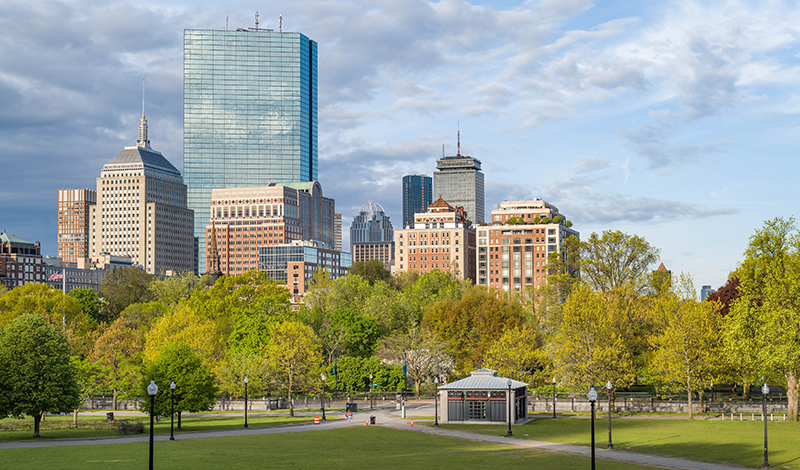
1990s
Visit 22: February 1990
Los Angeles
In February 1990, Ikeda Sensei canceled his trip to South America to extend his visit to the U.S. at a critical juncture for the SGI-USA. During his 17-day stay, he held numerous meetings with the American members, especially the youth. At these sessions, he offered guidance to solidify the foundation of faith for the SGI-USA far into the future, leaving behind a textbook of faith that has been compiled in My Dear Friends in America. His encouragement includes the addresses “Cultivate a New Common Sense,” from the First SGI-USA Youth Division Training Session on Feb. 14, and “Buddhism Is the Clear Mirror That Reflects Our Lives,” given on Feb. 27 at the First SGI-USA Women’s Division Meeting. On Feb. 17, the SGI-USA Culture Department was established.
Sensei also held dialogues with Nobel Prize laureate Linus Pauling and journalist and peace advocate Norman Cousins. Following his visit, in May, the Sophia Group, the women’s study group, was established, creating a grand tradition that continues more than three decades on.
Visit 23: September–October 1991
Los Angeles, Boston
In Los Angeles, Sensei attended several training meetings, including a U.S.-Japan exchange training meeting. He then visited Boston, meeting with Elie Wiesel, Nobel Prize laureate and Holocaust survivor, and Neil Rudenstine, Harvard University president. Sensei then presented a lecture on Sept. 26 at Harvard University’s John F. Kennedy School of Government titled “The Age of Soft Power,” where he said: “I propose that self-motivation is what will open the way to the era of soft power. While systems depending on hard power have succeeded by using established tools of coercion to move people toward certain goals, the success of soft power is based on volition. It is an internally generated energy of will created through consensus and understanding among people. The processes of soft power unleash the inner energies of the individual” (My Dear Friends in America, fourth edition, pp. 126–27). Sensei concluded his visit to the city by meeting with SGI-USA members.
Visit 24: January–March 1993
Los Angeles, Miami, San Francisco
Sensei arrived in Los Angeles and attended the Second SGI-USA General Meeting, which was simulcast to members nationwide. He also met with U.S. Civil Rights hero Rosa Parks, lectured at Claremont McKenna College and penned his groundbreaking poem “The Sun of Jiyu Over a New Land.” In the poem, Sensei recalled the heartrending images of the 1992 civil unrest in Los Angeles that had raced around the world, following the verdict in the Rodney King trial. He then wrote that the solution to the increasing division in society is to “break the hard shell of the lesser self,” reminding us to return to humanity’s essence, transcending all superficial differences and helping others awaken to the life state of jiyu within: “If one reaches back to these fundamental roots, / all become friends and comrades. / To realize this is to ‘emerge from the earth’” (My Dear Friends in America, fourth edition, p. 215).
In February, Sensei traveled to Miami. Then, during his visit to San Francisco in March, he attended the First SGI-USA Youth Division General Meeting where the SGI-USA junior high and high school division was established.
Visit 25: September 1993
Los Angeles, Boston
Upon his arrival in Los Angeles, Sensei attended several training and encouragement meetings. He then traveled to Boston and attended meetings with SGI-USA members.
On Sept. 24, he delivered his second lecture at Harvard University, titled “Mahayana Buddhism and Twenty-First-Century Civilization,” where he touched on the Buddhist emphasis on dialogue, the interrelationship of all things and the role Buddhism can play in the restoration and rejuvenation of humanity, saying: “In an age marked by widespread religious revival, we need always ask: Does religion make people stronger or weaker? Does it encourage what is good or what is evil in them? Are they made better and wiser by religion?” (My Dear Friends in America, fourth edition, p. 352).
During his visit, he also opened the Boston Research Center for the 21st Century, which today is known as the Ikeda Center for Peace, Learning, and Dialogue.
Visit 26: January 1995
Honolulu
On Jan. 25, Sensei arrived in Honolulu. The following day, on the 20th anniversary of the SGI’s founding, he lectured at the University of Hawaii at the invitation of the Spark M. Matsunaga Institute for Peace at the East-West Center. He received the institute’s Aloha International Peace Award. During his stay, Sensei attended the SGI Pan-Pacific Peace and Culture Conference and the official opening of the newly built Hawaii Culture Center. He also participated in the 13th World Peace Youth Culture Festival.
Visit 27: June–July 1996
Los Angeles, Denver, New York, Miami, El Paso, Texas
In June 1996, Sensei departed for his 27th and final visit to the U.S. In Los Angeles, he attended various meetings with SGI-USA members and lectured at the Simon Wiesenthal Center on “Makiguchi’s Lifelong Pursuit of Justice and Humane Values.” He also reviewed plans for the new Soka University of America undergraduate campus, which opened on May 3, 2001, in Aliso Viejo, California. Sensei then went on to visit Denver, New York, Miami and El Paso, Texas.
During his visit to Denver, he received an honorary doctorate from the University of Denver on June 8—his first from a U.S. institution of higher learning. He also attended meetings with local members, including the Rocky Mountain Joint Territory Cherry Blossom General Meeting on June 9 and an executive leaders conference the following day.
In New York, he lectured at Columbia University’s Teachers College, presenting the enduring lecture “Thoughts on Education for Global Citizenship,” and attended a youth culture festival at Carnegie Hall. At the New York Culture Center, he unveiled a bronze plaque created by the members bearing an inscription of his 1981 poem “To My Beloved Young American Friends,” which he had penned in New York.
He then traveled to Florida to celebrate the opening of the SGI-USA Florida Nature and Culture Center in Weston, Florida. On June 23, Sensei attended the 21st SGI General Meeting held at the FNCC Friendship Hall, with members from 52 countries and territories. He spent several days freely traveling the FNCC grounds, interacting with SGI members from around the world. He then left Miami for a brief visit to Latin America before returning to the U.S.
When he returned, Sensei stopped briefly on June 29 at an airport in El Paso, Texas. There, he encouraged and praised the local SGI-USA members for their efforts to advance kosen-rufu. To mark the occasion, Sensei composed the poem “To the Great Pioneers of Kosen-rufu of El Paso.”
On July 5, a day before his departure, Sensei attended the Los Angeles Representatives Conference, where he said:
You have become a truly wonderful SGI-USA. The organization in America is now like the rising sun of a brilliant new dawn. Everything is determined by people. Because the number of fine people has increased, you have developed into a fine SGI-USA.
If the organization in America is solid both in terms of its movement for kosen-rufu and its position in society, the world can rest at ease. Please have the awareness, therefore, that your very existence is the hope of all humankind. I pray that you will become the world’s most harmonious SGI-USA, where members unite together in a spirit of mutual trust and respect.
I would like each of you to enjoy your life to the fullest. In light of the Buddhist principle that ‘earthly desires are enlightenment,’ all our hardships, efforts and challenges are causes for rejoicing. Let us strive to live our lives with this spirit. (My Dear Friends in America, fourth edition, p. 496)
January 2, 2024, World Tribune, pp. 26–35
You are reading {{ meterCount }} of {{ meterMax }} free premium articles

